Blue Funnel Line - Ocean Steamship Company
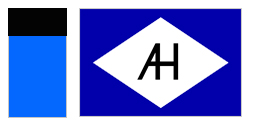 Three of this company’s ships were operating between Singapore and Western Australia at the start of the Second World War:
Three of this company’s ships were operating between Singapore and Western Australia at the start of the Second World War:
Ship |
Built |
Gross Tons |
In Service |
| Centaur | 1924 | 3066 | 1924-1943 |
| Gorgon | 1933 | 3533 | 1933-1964 |
| Charon | 1936 | 3703 | 1936-1964 |
Centaur was converted in 1940 to a Hospital Ship and placed on loan to the Australian Government. On 14 May 1943 she was torpedoed by the Japanese submarine I.74 while en route Sydney-Papua New Guinea. Gorgon, though surviving the war, suffered enemy bombing damage at least twice: in February 1942 during the evacuation from Singapore and in April 1943 at Milne Bay.
Read moreDate posted: 2014-04-02 | Comments(0)
Australian Oriental Line
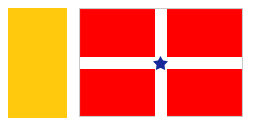 Two ships were serving the Asia-Australia area as the Second World War commenced:
Two ships were serving the Asia-Australia area as the Second World War commenced:
Ship |
Built |
Gross Tons |
In Service |
| Changte | 1925 | 4324 | 1925-1961 |
| Taiping | 1926 | 4324 | 1926-1961 |
Changte served under wartime requisition.
Read moreDate posted: 2014-04-02 | Comments(0)
Union Steamship Company of Australia & NZ
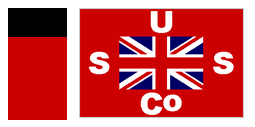 “Union Steam”, a New Zealand-based fleet founded in 1875, lays claim to having become, by the mid-20th Century, one of the leading shipping lines of the world. It owes its origins to the energies of a merchant John Jones (who arrived in Otago, New Zealand from Australia in 1843), James Mills (a New Zealander born in 1847 and at 21 years of age managing the Harbour Steam Company) and John Darling (later Union Steam's first superintending engineer). The Company has operated world-wide, and especially passenger and cargo services between its home country and the Australia/Pacific area, as well as having close links with the Canadian-Australasian Line. The number of vessels passing through its ownership since 1875 now approaches three hundred. The line’s links with Australia were strengthened by application of Australian crew conditions
“Union Steam”, a New Zealand-based fleet founded in 1875, lays claim to having become, by the mid-20th Century, one of the leading shipping lines of the world. It owes its origins to the energies of a merchant John Jones (who arrived in Otago, New Zealand from Australia in 1843), James Mills (a New Zealander born in 1847 and at 21 years of age managing the Harbour Steam Company) and John Darling (later Union Steam's first superintending engineer). The Company has operated world-wide, and especially passenger and cargo services between its home country and the Australia/Pacific area, as well as having close links with the Canadian-Australasian Line. The number of vessels passing through its ownership since 1875 now approaches three hundred. The line’s links with Australia were strengthened by application of Australian crew conditions
The company’s Maunganui served as a troopship during the Great War and it had a variously-sized fleet of about fifty ships as the Second World War opened, many remaining in local service through the war years. The experiences and fate of others were notable:
Ship |
Event |
| Monowai (gt 10852) | Taken over by the New Zealand Government October 1939, converted to Armed Merchant Cruiser, later to Landing Ship, Infantry and from 1944 to troopship, including repatriation of Russian prisoners-of-war. |
| Komata II | Sunk 8 December 1940 off Nauru by German raider Komet |
| Awatea (gt 13482) | Evacuee- and troop-carrying duties 1940. In 1941 requisitioned by British Ministry of War Transport as troopship world-wide. Sunk by German bombers of Algiers 11 November 1942. |
| Maunganui (gt 7527) | Requisitioned by the New Zealand Government January 1941, converted to a Hospital Ship |
| Wahine (gt 4436) | Periodically operated as troop- and evacuee-ship during the 1941-1945 Pacific campaign. |
| Rangatira (gt 6152) | Periodically operated as troop- and evacuee-ship during the 1941-1945 Pacific campaign. |
| Matua (gt 4166) | Periodically operated as troop- and evacuee-ship during the 1941-1945 Pacific campaign. |
| Hauraki (gt 7113) | Sunk, Caroline Islands 17 February 1944 |
| Kalingo (gt 2047) | Sunk off New South Wales coast 18 January 1943 |
| Wairuna (gt 5832) | Scuttled North Atlantic 30 October 1945 |
Under Union Steam Ship Co. Management, for mention as connected
Ship |
Event |
| Niagara (gt 13415) | Struck mine, sank, New Zealand coast 19 June 1940 |
| Aorangi (gt 17491) | Requisitioned by British Ministry of War Transport 1941 for trooping. Evacuation duties 1942. Used as a Depot Ship and Casualty Clearing Station Normandy 1944 |
| Limerick (gt 8734) | Torpedoed by Japanese submarine off Cape Byron New South Wales 26 April 1943 |
| Underwood (gt 1990) | Heavy-Lift capable, requisitioned 1941 in United Kingdom at completion of build, sunk by a German E-boat near the English Channel 6 January 1944 |
Date posted: 2014-04-02 | Comments(0)
Tasmanian Steamers
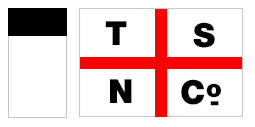 An amalgam of the Bass Strait ferry fleets of Huddart Parker and Union Steamship Company of New Zealand, this organization came into existence on 1 January 1922. During the Great War, its Nairana had operated under requisition by the Royal Navy in 1917, converted to a seaplane carrier.
An amalgam of the Bass Strait ferry fleets of Huddart Parker and Union Steamship Company of New Zealand, this organization came into existence on 1 January 1922. During the Great War, its Nairana had operated under requisition by the Royal Navy in 1917, converted to a seaplane carrier.
The company was operating two ships as the Second World War opened:
Ship |
Built |
Gross Tons |
In Service |
| Nairana | 1915 | 3042 | 1921-1948 |
| Taroona | 1934 | 4297 | 1935-1959 |
With Nairana left to operate the Bass Strait service through most of the war years, Taroona was requisitioned in January 1942 for service as a troopship throughout the war, initially under the New Zealand Naval Board.
Date posted: 2014-04-02 | Comments(0)
State Shipping Service of WA
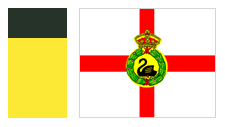 This service was established in 1912, for operation as far north as Darwin and south to Albany and Eucla in its early years.
This service was established in 1912, for operation as far north as Darwin and south to Albany and Eucla in its early years.
At the start of the Second World War the service had three ships:
Ship |
Built |
Gross Tons |
In Service |
| Kybra | 1926 | 858 | 1926-1958 |
| Koolinda | 1926 | 4227 | 1926-1958 |
| Koolama | 1938 | 4068 | 1938-1946 |
While Koolinda assisted in evacuations from Darwin in December 1941, Kybra was requisitioned by the Royal Australian Navy on 21 June 1940 as an anti-submarine vessel. Koolama, requisitioned on 16 January 1942, operated until 29 February in northern troop re-supply and civilian evacuation duties, but on that date, near Wyndham, was attacked and disabled for the remainder of the war, being scuttled at sea in 1946.
Date posted: 2014-04-02 | Comments(0)